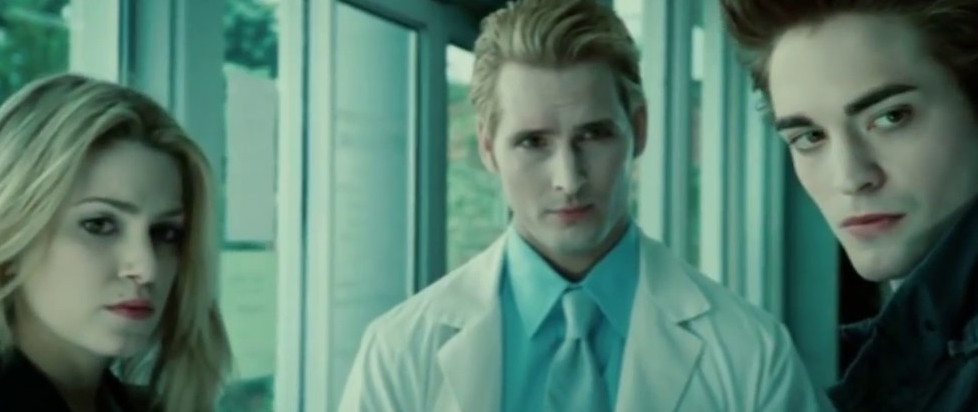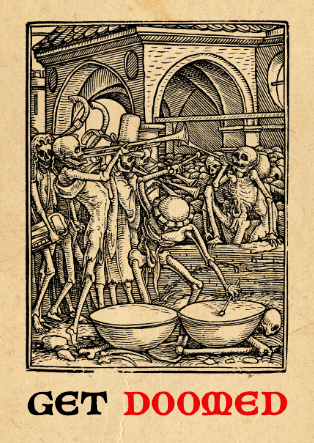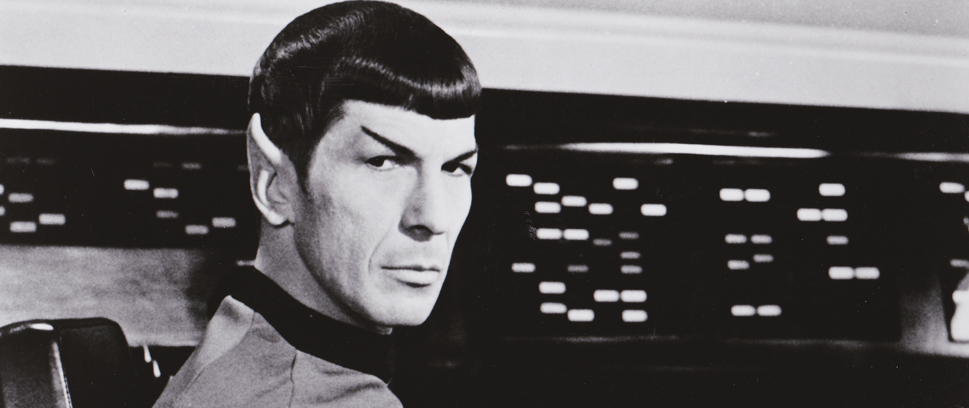
here’s 2300 words on twilight and new moon
I was never a fan of Twilight.
That is the standard mea culpa that tends to lead think pieces about the 2005 young adult best seller and its following books and films. It’s a disclaimer of taste so that you know the writer of the piece is going to give you a view of one of the most critically derided pieces of popular culture to come out in the last 20 years that you will fundamentally agree with. Twilight, the common conception goes, is garbage.
Frequently the kind of person who seeks to shit on the altar of Stephanie Meyer and her Mormon, vegetarian vampires is distinctly not in the target demographic. In that case, it feels less like a declaration of good taste and more of invading someone else’s space to declare your superiority. Twilight is not for you.
It is not for me either, but I was never really in its target demographic. The only romantic film I can remember liking is Definitely Maybe and perhaps if we stretch the description a touch, I would say Eternal Sunshine of the Spotless Mind or The Handmaiden. Melodrama, specifically that special brand of teenage angst that Twilight luxuriates in, gives me hives. But it feels odd to talk about a piece without engaging with it, so when I was a teenager I read the books and saw the movies, most of them on opening night. It was an important cultural touchstone, and for a lot of young women, it still is.
***
Twilight at its core, is barely functional as a romance, but deeply fascinating as a tragedy where two distinct cultures interact and implode around each other. Nowhere is that more clear than in its first two film adaptations, Catherine Hardwicke’s 2008 Twilight and the Chris Weitz directed 2009 The Twilight Saga: New Moon.
All of the Twilight saga films were written by award-winning screenwriter Melissa Rosenberg who was a fitting choice for the series — her work before the novel adaptation was on the television show The O.C. and the Channing Tatum dancing vehicle Step Up. While its DNA is beholden to the same concepts as these teen melodramas, Twilight seems more self-aware of its fundamental tragedy, a concept lost on its further sequels.
Catherine Hardwick was an inspired choice for an opening franchise director. The books had already been the kind of young adult success that makes publishers salivate, the black and white covers with their bright red details becoming a staple of a young woman’s library in the mid aughts. Hardwicke was best known at that point as an indie director, her most famous films about teenagers in interesting circumstances: Thirteen, Lords of Dogtown and The Nativity Story (where she famously cast a 16 year old Keisha Castle-Hughes as the Virgin Mary). Putting her in charge of an effects driven franchise was an odd choice, but her decisions managed to recontextualize the love story of the Twilight saga into something very different from the initial book and it’s a shame that she was replaced with bog-standard male directors. Her successors include Chris Weitz (co-director of American Pie and later one of the writers of Rogue One) David Slade (Hard Candy, 30 Days of Night) and Bill Condon (Kinsey, Dreamgirls and later Beauty and the Beast), even though her vampire flick made nearly 10 times its budget in theaters. Hardwicke’s direction in this film, and the odd humanity of Rosenberg’s script, are the most grounding elements of the Twilight franchise and are quickly warped and distorted over the course of the films.
***
Twilight is a movie dominated by sequences of discomfort and torture. Hardwicke was instrumental in casting two actors who would go on to be remarkable leads in their own right — Kristen Stewart and Robert Pattinson — but whose chemistry was fundamentally awkward. There’s something coltish about Stewart’s portrayal of the clumsy and off-putting everygirl Bella Swan, and in its own way there is something nearly upsetting about Pattinson’s portrayal of 100 year old virgin Edward Cullen. Their first meeting, in a biology classroom, is cartoonishly unsettling, Edwards face twisted into a visage of disgust and Bella nearly tripping over her feet at the sight of him. It’s like they can’t stand to be in the same room together, and yet these are the romantic leads. Every further sequence, from Bella trying to interact with Edward, to her revelation that he’s a vampire, is treated as a sort of chaste encounter with a serial killer. The movie is shot in blues and greens, bleak and cold even as our lead characters profess their love for each other.
It’s not as though the film gets more comfortable with its romance. One of the final sequences of the film is Bella Swan bleeding out on the floor of her childhood ballet studio as Edward has to stop her from dying by nearly killing her. It’s treated as a deeply traumatic scene, Bella screaming as her vision goes in and out, Edwards mouth covered in her blood.
The other key to the first Twilight film is that it calmly juxtaposes the offness of the supernatural with the warm humanity of Bella’s interactions with her peers and her family. The emotional core of the Twilight saga isn’t Bella, rather it’s her father Charlie. Her interactions with him are short warmly, her room lit in fairy lights, his clothes flannel and denim. By contrast, the Cullen’s don’t look like models or even attractive — they look deeply unnatural. Their eyes glow a golden orange, their skin sheet white, hair still and unmoving. They look less like beautiful humans and more like stone statues brought to life. They look ill, a Victorian painting of attractiveness, their beauty impossible.
The following films would take these strong elements and contort and twist them until they did not function nearly as well as they did in Hardwicke’s initial franchise piece. By Breaking Dawn Part II, the final film in the saga is shot on a series of dilapidated soundstages and burdened with a cast of Oscar nominated actors, the offness of the Cullens and their vampire brethren is entirely forgotten. Breaking Dawn Part II has a dream sequence so watered down by bloodless decapitation that it ceases to have effect, completely at odds with the brutality of the torture sequence in Twilight where Bella has bones broken so that she can serve as bait for Edward.
***
The films begin their downward slide almost immediately after this first outing, but New Moon is a firm road map towards where the rest of the films will end up going.
New Moon is the best book of the series, and because of that it overcomes a lot of middling direction by Chris Weitz. Simply, it is the best book because it introduces some of the best characters of the franchise and because Edward is gone for the largest portion of it. The film starts with a fantastic sequence of body horror — where Bella realizes that she is going to physically age faster than her vampire lover, that someday he will be pristine and perfect while she will suffer from the physical and mental degradation of mortality. This movie also introduces the true villain of the franchise — Bella’s obsession with immortality and her unwillingness to understand Edward’s moral objections.
Early on, at Bella’s birthday party, she cuts her finger and sets off one of Edwards vampire siblings Jasper. She is taken to another room by the Cullen patriarch who, while patching her bloodied form, explains that Edward will not turn her because he fears that doing so will take from her one of the the things that he values most about her: her eternal soul.
If you don’t believe as Edward does, this may seem ridiculous. But it’s an interesting scene because it shows that Bella is effectively trying to pressure him into doing something he finds deeply morally objectionable, and this is something that she will continue to do throughout the series. This is the franchises primary culture shock — between the “vegetarian” vampires and Bella’s concrete and unshakeable human morality. For her, the vampires are not soulless or dead, and she is unwilling to engage with them past her own beliefs. Immediately after being informed that this is a moral quandary for Edward, she pushes him with what she doesn’t even realize is an ultimatum, telling him he can’t protect her frail, human body unless he turns her. It is, as he says, not a solution but a tragedy.
This moment, more than any other in the films, is the inciting action.
She tells him, in this moment, that he won’t love her when he is old, which understandably (since again, while Edward appears to be a teenage boy, he is in fact a 100+ year old vampire) pisses him off. She is attempting to challenge his faith and morality over a point of her own vanity. This pushes Edward into doing the smartest thing he can do in the face of her misunderstanding and what is clearly an unhealthy relationship: he leaves.
The antagonist of this film, aside from Bella’s own inability to understand others morality, is crippling depression. After their break up she wanders into the woods in a fugue state and lays down, only to be found literally hours later by her father and the Native American wolf pack that plays a starring role in New Moon. There is handful of near blank pages with the names of months at the top, and it’s high melodrama but it serves to show that for Bella — nothing has changed save for time, her depression remains. The film copies this feeling, with a slow pan around Bella, catching sight of the window on every rotation as the seasons change from fall to winter.
While the movie (and the book) seemed to believe that this depression is from a broken heart, it honestly makes more sense that it’s PTSD from being kidnapped and tortured by a violent murderer. Later, when she hangs out with Jacob (her werewolf friend, and the third part of what the franchise desperately tries to treat as a love triangle) she hits her head. Bleeding, she begins to apologize profusely, and this is a sign of an insane alternative universe that she lives in where her normal bodily functions are dangerous to the people around her, where she has to apologize for having blood. Even later, when she’s introduced to the rest of the werewolf pack in a violent altercation, they’re the ones that apologize to her. No one ever treats her as though she is at fault, a direct contradiction to her interactions with the Cullens. It’s in these moments, and few others, where Team Jacob makes sense. Jacob acts like a normal person who’s just looking out for his long term friend, a young woman who keeps committing herself to these truly horrific and dangerous situations and seems to want to be romantically inclined towards something that wants to eat her. She needs someone in her corner, a situation that is never fully realized since Meyer (and subsequently the movies) insisted on making the teenaged werewolf her potential lover rather than a good friend.
Like the human scenes in the first film, the sequences with the werewolf pack are treated as golden and friendly. The wolves playfully push each other around, they eat together at warm wooden tables, and they are seen as being more attuned to nature. The wolves are, in Twilight lore, a natural response to the vampires like antibodies responding to an infection. They only exist if there are vampires in the area and their first shift is painful and scary, a sort of supernatural puberty brought on by vampiric plague. While there are elements of the Magical Native trope in their existence, they’re a piece of family interaction that Bella needs to gain introspection on the Cullen family. Not all supernatural families are like the one that she’s trying to force her way into.
***
When Edward makes his inevitable return, it’s a drop from these sort of retrospective beats. (His return to the story is where he believes that she has died so decides to commit the vampire equivalent of suicide-by-cop in Italy, and as such she must travel quickly to Italy to save him.) She has been on a journey throughout this film of self-care. She started hiding in her room all day, having terrifying dreams where she woke her father screaming, and only when she has salvaged herself emotionally is she now once again worth Edwards time. After saving his life, she begins to spiral down again, having nightmares of murdered children and pushing Edward once again, to change her.
Bella, not Edward, is the prime emotional manipulator of the series but in these sequences, it is clear that Edwards’ presence in her life is deeply destructive and that, as the older party, he should leave. Vampire royalty has decreed that Bella must be changed, and she uses this to her advantage, getting approval from his family and after that, demanding that he be the one to do it. He bargains, begging for more options. Five years, he asks. That’s too long. So he returns with his own ask for commitment — in the form of marriage. But her desire to be immortal is more a point of vanity than actual commitment. She balks.
Bella’s arguments against marriage are transparent in their insignificance. She doesn’t want to get married because it’s “just a piece of paper” or because the only people who get married that young are people who have been knocked up. She’s forcing her partner, who clearly views this as tantamount to murder, to turn her into an immortal killing machine and her concerns are about her peers impressions of her.
Bella is the primary manipulator in the franchise. Her decisions are fundamentally for selfish reasons, buoyed by her teenage “love” that seems incapable of understanding the threats that others face because of her. There’s a common refrain of “still a better love story than Twilight” and it’s fitting that the two best entries in the film series are the ones that identify the romance between Bella and Edward as a tragedy rather than something to be lauded.





